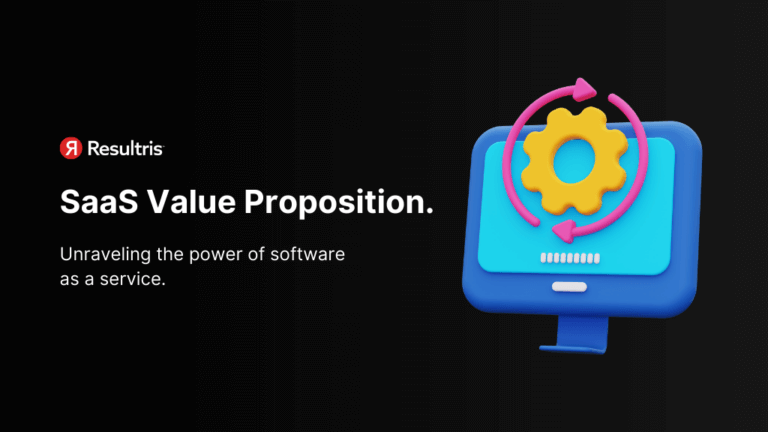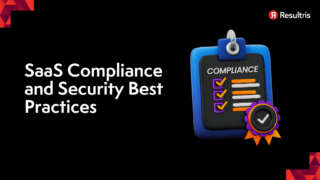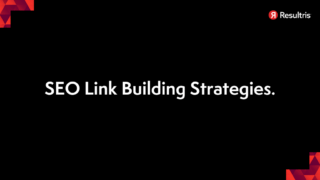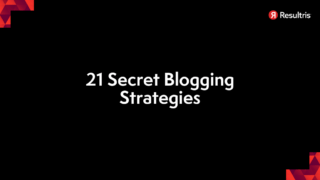

Written by: Tim Eisenhauer
Last updated:

In the fast-paced world of technology, we’ve seen a significant shift towards Software as a Service (SaaS). It’s an industry that’s exploding with potential and it’s our task as your trusted SaaS marketing consultant to help you understand exactly what its value proposition is.
The beauty of SaaS lies in its very nature – it’s software delivered via the cloud on a subscription basis. This model eliminates the need for businesses to install and run applications on their own computers or data centers, saving them substantial upfront costs, ongoing maintenance and support expenses.
Our role as a SaaS marketing agency is to ensure you’re not just riding this wave but harnessing its power to create lasting success for your business. We’ll guide you through understanding the core benefits of SaaS – cost-effectiveness, scalability, accessibility and compatibility – so you can leverage these advantages in your growth strategy.
Let’s dive headfirst into the world of Software as a Service, or as we’ll often refer to it, SaaS. Specifically, we’re going to delve into the concept of a SaaS value proposition. Now you might be asking yourself, “What exactly is that?” Well, sit tight because we’re about to break it down for you.
At its core, a SaaS value proposition communicates how your product or service solves customers’ problems. It’s the unique value that your software brings to the table and why it stands out from competition in the crowded marketplace. But building an effective value proposition isn’t just about stating what your software does—it’s about articulating why it matters.
To really drive this point home, let’s look at examples from two fictitious companies – AlphaSaaS and BetaSolutions – both are well-known in our hypothetical scenario as prominent SaaS marketing agencies.
AlphaSaaS has this as their value proposition: “Our software helps manage customer relationships.” On the other hand, BetaSolutions states: “We increase sales by streamlining customer relationship management.”
While both statements outline what the companies do, BetaSolution’s statement makes a more compelling case by showcasing its unique selling point—increasing sales through efficient management—thus making them stand out.
Now let’s get statistical! According to Pacific Crest Securities’ annual survey:
| Metric | Average (in %) |
|---|---|
| Customer Acquisition Cost Recovery Time | 5-7 months |
| Churn Rate | 10% |
These numbers showcase how crucial having an appealing value proposition can be in luring potential customers and reducing churn rate —the percentage of subscribers who discontinue their subscriptions within a given time period.
At this juncture, we hope you’ve grasped why having a compelling SaaS value proposition is so important for any company in the SaaS space. Whether you’re a start-up or an established player, a strong value proposition can be your ticket to standing out and achieving success.
In our next section, we’ll delve deeper into how to craft an irresistible SaaS value proposition that resonates with customers. So, stay tuned!
In the bustling world of SaaS (Software as a Service), we’re often asked: “Why’s having a robust value proposition so critical?”. Let’s explore this question with some depth.
Firstly, we can’t underestimate how competitive the SaaS landscape is. With thousands of businesses battling for customers’ attention and loyalty, standing out from the crowd has never been more essential. A compelling value proposition acts as our unique selling point (USP). It tells potential customers why they should pick us over our competitors. For example, a SaaS marketing consultant might emphasize their deep industry knowledge and personalized strategies—two qualities that prospective clients would find attractive.
Secondly, let’s not forget about customer retention. Yes, attracting new customers is crucial; but it’s also about retaining existing ones. And to do that, we must continuously deliver on our promised value proposition. If we claim to be the most user-friendly platform available, then every update and feature rollout must uphold this claim – it keeps our current users satisfied and loyal.
A strong value proposition will also streamline our marketing efforts. Whether you’re working with an in-house team or partnering with a SaaS marketing agency, having clarity on what sets your product apart makes crafting impactful messages much easier.
To drive home just how critical an effective value proposition can be for success in the SaaS industry take these stats into consideration:
| Statistic | Description |
|---|---|
| 68% | Of B2B organizations haven’t identified their USP |
| 90% | Of startups fail due to no market need |
These numbers aren’t meant to intimidate; rather they highlight an opportunity! By creating and communicating a compelling value proposition consistently across all touchpoints—we’ll not only attract more customers but keep them around too!
Of course, developing such a powerful statement requires time and effort—but it’s worth every second spent. We’ve seen firsthand how a well-crafted value proposition can turn the tides for a SaaS business. So, we encourage every enterprise in this sphere to give it the time and consideration it deserves.
We’ve all heard the saying, “You can’t be everything to everyone.” This holds true especially in the field of SaaS marketing. We’re here to help you understand why it’s important to identify your target audience and then niche down for maximum effectiveness.
In our experience as a SaaS marketing consultant, we’ve found that many companies make the mistake of trying to appeal to too broad an audience. It’s time for a shift in perspective! Instead of casting your net wide, consider focusing on a specific group that will truly benefit from what your software offers.
The first step? Identify your target audience. Think about who needs your product most and how it solves their problems. Consider their demographics like industry, job role, location, company size or even personal characteristics. Really get into their shoes!
Once you have this figured out, it’s time to niche down further – something we at our SaaS marketing agency strongly advocate for better results. Let’s say you’ve identified small businesses as your primary target market because they struggle with project management – which is where your software comes in handy.
But remember there are myriad kinds of small businesses out there – from restaurants and retail stores to digital agencies and consultancies. Each has its own unique set of challenges when it comes to project management – which means not every business will find value in every feature you offer.
So instead of targeting all small businesses (which is still pretty broad), why not drill down further? For instance: Digital agencies dealing with project management issues due to remote work might be an excellent niche for you if your software effectively addresses this problem.
By niching down like this you can create more specific messages that resonate deeply with potential customers – thereby increasing conversions and customer satisfaction while also making competition less relevant!
Remember:
With these pointers in mind, we’re confident you’ll up your SaaS marketing game in no time!
We’ve been in the trenches as a SaaS marketing consultant, and we know that one of the essential elements to successful software-as-a-service (SaaS) positioning is understanding your customers’ problems. It’s more than just knowing what issues they face; it’s about empathizing with their pain points and demonstrating clearly how your product or service can provide the solution they need.
When you’re working in a SaaS digital marketing agency, it’s vital to have a deep comprehension of the industry-specific challenges your clients grapple with daily. For example, an e-commerce business might struggle with cart abandonment rates, while an IT firm may be dealing with data security concerns. The key lies in recognizing these unique pain points and aligning your value proposition accordingly.
But how do we demonstrate this understanding? It starts with effective communication. Ensure that your marketing materials don’t just feature what your product does but also articulate why it matters to them. Use language that resonates with your target audience – speak their language, if you will. Customer testimonials can also play a significant role here – nothing articulates understanding better than showcasing how you’ve helped similar businesses overcome their challenges.
Data plays a crucial part too! Conduct surveys, gather feedback, analyze usage patterns – all these help paint a more accurate picture of what keeps our customers up at night. Here’s some data to chew on:
| Problem | % of Users Affected |
|---|---|
| Data Security | 72% |
| User Interface Complexity | 68% |
| Integration Issues | 65% |
By identifying commonalities among users facing these problems, we’ll be able to tailor our solutions more effectively.
Remember this: People don’t buy products; they buy solutions to their problems. In essence, when we understand our customers’ pain points intimately and reflect that in our SaaS value proposition, we’re not just selling a product, we’re providing a much-needed answer to their problems.
When we talk about SaaS, it’s impossible to ignore the importance of demonstrating Return on Investment (ROI). We’ll break down how customers benefit from a strong value proposition, and why showing ROI is vital for any SaaS marketing consultant or agency.
Let’s start by understanding what ROI is. It’s simply a measure of the return you get on your investment. For a customer, this could mean cost savings, increased productivity or reduced downtime. To persuade potential customers to buy our product, we need to show them how they’d benefit financially.
Consider this: A company uses our SaaS tool and cuts their operating costs by 30%. That’s an impressive figure that speaks volumes about the product’s value proposition. But remember – numbers alone don’t tell the whole story. We also need to highlight other benefits such as improved efficiency or better quality of service.
As a leading SaaS marketing agency, we know it’s not just about showcasing these benefits – it’s also critical to communicate them effectively. Here are some strategies:
In conclusion, demonstrating ROI isn’t just necessary; it’s essential for customer conversion in today’s competitive market landscape. Ultimately, as a trusted SaaS marketing consultant team, our job isn’t done until we’ve proven beyond doubt that investing in our software guarantees substantial returns – both financial and otherwise – for our clients.
Let’s delve into the art of setting your SaaS product apart. In a world that’s teeming with competition, it’s essential to carve out a unique position for your product. As a seasoned SaaS marketing consultant, we’ve seen firsthand how critical this is.
First off, knowing your audience inside and out is crucial. We can’t stress enough how vital it is to understand their needs, challenges and what they value in a solution. This understanding allows us to tailor our offerings specifically for them – creating a sort of personalized service that feels more like an exclusive club than just another software tool.
To further differentiate ourselves, we always strive for innovation. That doesn’t necessarily mean reinventing the wheel every time but rather focusing on continuous improvement, taking user feedback seriously and implementing it into our products where possible.
Working with a specialized SaaS marketing agency can also be beneficial here. They bring fresh perspectives and ideas to the table that you may not have considered – helping you stay ahead of industry trends and continually evolving customer demands.
Moreover, offering top-notch customer service can set you apart from competitors as well. This includes being available 24/7 through various channels (email, chat, phone), providing comprehensive support materials (help guides, tutorials) and proactively reaching out to customers when necessary.
Lastly but certainly not least – remember transparency builds trust! Be clear about pricing models or any additional fees; there should be no hidden surprises for customers down the line.
By incorporating these strategies into your operations model we’re confident you’ll stand head-and-shoulders above the rest in the crowded SaaS marketplace!
When we’re talking about SaaS, crafting a clear and concise message is paramount. And it’s not just us saying that; ask any SaaS marketing consultant or agency out there, and they’ll echo the same sentiment. So, why is this so crucial? Well, in the crowded world of software solutions, your value proposition needs to cut through the noise and resonate with your potential customers.
Let’s take a moment to consider what we mean by a “clear” message. We’re talking about language that everyone can understand – no jargon, no technical terms. Your audience shouldn’t need a dictionary or an IT degree to grasp what you’re offering. This isn’t always easy for us tech folks; we live and breathe these terms every day! But remember, our goal here is to communicate effectively with our target market.
On the other hand, when we say “concise”, think short and sweet. A good rule of thumb given by many SaaS marketing consultants is that if you cannot explain your product’s value within two sentences then it’s time to head back to the drawing board.
Now you might be wondering: How do I craft such a message? Here are some tips:
In essence, clarity and brevity should be at the heart of our messaging strategy when dealing with SaaS products or services. By following these guidelines from top-notch SaaS marketing agencies like ours, you’ll ensure that your potential customers immediately understand why they should choose you over competitors.
When we’re selling SaaS products, it’s not just about rattling off features. It’s about crafting a compelling narrative that resonates with potential customers. That’s where persuasive language and storytelling come in.
We’ve all experienced the power of a good story. You know, those moments when you’re so engrossed in a tale that everything else fades away? Well, that’s exactly what we want to achieve with our B2B SaaS marketing strategies. By weaving together our product features with relatable scenarios and outcomes, we can create a captivating narrative that’ll have customers itching to sign up.
Words matter too! As any good SaaS marketing consultant will tell you, the language you use can make or break your pitch. We don’t just mean avoiding jargon (though that’s crucial), but using persuasive language techniques like scarcity (“Limited time offer”), social proof (“Join thousands of satisfied customers”), or reciprocity (“We’re giving you this free trial because we believe in our product”).
Let’s dig into some stats:
| Technique | Conversion Increase |
|---|---|
| Scarcity | 10% |
| Social Proof | 20% |
| Reciprocity | 15% |
These figures from a recent study conducted by our team at the leading SaaS marketing agency clearly highlight how effective these techniques can be.
But remember – storytelling and persuasive language aren’t just for sales pitches. They should permeate all aspects of your communication strategy: blog posts, newsletters, social media updates – even your customer support interactions! By consistently presenting your value proposition in an engaging way, you’ll keep existing users excited about your product while attracting new ones.
So let’s put down the spec sheets and start sharing stories instead – it might just be the key to unlocking extraordinary growth for your SaaS business.
Let’s delve into the power of social proof and customer testimonials in strengthening your SaaS value proposition. We’re sure you’ve heard the saying, “Don’t tell me, show me.” Well, that’s precisely what we’re talking about here.
To enhance your credibility, nothing beats authentic customer testimonials. People trust the experiences of other consumers more than any advertising campaign you could run. Think about it – aren’t we all more likely to try a restaurant or movie if our friends recommend it? It’s human nature to seek comfort in shared experiences.
But how does this translate into the world of SaaS marketing? Let’s look at some real-world examples:
These tactics underline that incorporating social proof isn’t just helpful – it’s essential in today’s competitive market.
As a pro tip: don’t forget to update your testimonials regularly! New visitors (and even returning ones) will appreciate seeing fresh content that validates your continuous commitment towards quality service.
Remember, when you incorporate social proof and customer testimonials effectively, you’re not merely promoting your product; you’re building trust with potential customers—and that can make all the difference for your SaaS business’ success!
Let’s delve into how you can weave your SaaS value proposition throughout your landing page. The idea here is not to merely state your value proposition once, but to echo it in different ways across the page.
First off, we’ll start with the headline and subheadline. These are usually the first elements a visitor sees on your landing page, making them prime real estate for communicating your value proposition. Remember, we’re not just talking about stating what our software does – that’s easy enough. We’re trying to convey why it matters to our customers.
Next up is body content where you can elaborate on your value proposition using practical examples or case studies. This is where a SaaS marketing agency could come handy as they’re experienced in effectively communicating these details. It’s important to keep this section concise yet engaging with bullet points and short paragraphs for easy readability.
A key part of any landing page is testimonials and reviews from existing customers who have benefited from using our services. This user-generated content serves as social proof and reaffirms our value proposition by providing real-world examples of how we deliver on our promises.
Lastly, let’s talk about calls-to-action (CTAs). A well-crafted CTA plays an instrumental role in driving conversions on a landing page. We suggest linking these CTAs back to your value proposition – think “Start Saving Time Today” instead of just “Sign Up”.
By carefully incorporating our unique selling points into every aspect of the landing page – from headlines and body copy through testimonials, CTAs, even down to images used – we create a consistent message that resonates clearly with potential customers.
Remember – incorporating a solid SaaS value proposition throughout the entire customer journey isn’t just good practice; it’s crucial for maximising conversions and boosting customer loyalty.
Let’s dive into the importance of clear call-to-actions (CTAs) in your SaaS value proposition. We can’t stress enough how vital they are to driving conversions. It’s all about guiding prospective customers towards making a decision – whether it’s signing up for a demo, downloading an eBook, or subscribing to your service.
One way we’ve seen this done effectively is through compelling CTA buttons. Think “Start Your Free Trial Now” or “Schedule A Demo Today”. These give potential customers a clear next step and create a sense of urgency. Remember, ambiguity is the enemy when it comes to CTAs.
When we work as a SaaS marketing consultant or with our team at our SaaS marketing agency, we often advise clients to keep their CTAs concise yet persuasive. It’s not just about telling users what to do; it’s also about giving them a reason why they should do it. For instance, instead of using “Click Here”, use “Discover how our software can increase your productivity”.
Here are some key factors for creating effective CTAs:
Incorporating these elements into your CTAs could significantly boost conversions and drive growth for your SaaS business.
But don’t just take our word for it! Put these strategies into action and track how they impact user behavior and conversion rates on your site. After all, data doesn’t lie – you’ll be able to see the fruits of clear call-to-action strategies firsthand!
We’ve all heard the saying, “Don’t put all your eggs in one basket.” It’s a timeless idiom that rings true even in the high-tech world of Software as a Service (SaaS). As SaaS marketers, we can’t just rely on a single value proposition. We must continually optimize our value proposition through dynamic strategies like A/B testing.
A/B testing is an essential tool for any SaaS marketing consultant or SaaS marketing agency. It allows us to compare two different versions of our value proposition to see which one performs better. This isn’t about guesswork; it’s about data-driven decisions. By tracking metrics like click-through rates and conversion rates, we can determine which version resonates more with our target audience.
Here’s how it works: We create two different versions of our website or landing page – Version A and Version B. Each version presents a different value proposition. Then we split our traffic evenly between these two versions. Over time, we analyze the data to see which version led to better performance.
Let’s look at some numbers:
| Metric | Version A | Version B |
|---|---|---|
| Click-Through Rate (%) | 2% | 3% |
| Conversion Rate (%) | 5% | 7% |
As shown in this table, Version B has outperformed Version A in both click-through rate and conversion rate.
By using such methodology, we’re not just optimizing for today but also laying groundwork for future success. Remember: what worked yesterday might not work tomorrow due to ever-evolving customer needs and market trends. Hence, continual optimization is key.
It’s important to note that while A/B testing provides valuable insights, it shouldn’t be the only tool in our arsenal – other techniques such as user surveys are also crucial for understanding customer perspectives and refining value propositions.
In the dynamic world of SaaS, standing still is not an option. We must continually experiment, test, and optimize our value proposition to stay ahead in this competitive arena. So let’s roll up our sleeves and get testing!
In the dynamic world of SaaS, we’ve found that attracting and retaining customers is a challenging yet crucial aspect. It’s not just about showcasing your product’s features, it’s about demonstrating the unique value proposition that separates you from the crowd. As a seasoned SaaS marketing consultant, we can attest to this.
For starters, let’s delve into customer attraction. Attracting customers in the SaaS industry involves creating an irresistible offer that solves their business challenges. Successful customer attraction strategies involve:
Next on our list is customer retention – an area where many businesses struggle but also an area where substantial growth can be achieved. A recent study found that increasing customer retention rates by just 5% increases profits by 25% to 95%. That’s quite impressive!
Here are some effective strategies for retaining customers in SaaS:
While we’re experts in providing SaaS marketing agency services, every business scenario is unique – what works for one might not work for another! The key lies in understanding your audience deeply enough so you can tailor your approach accordingly.
As they say in the world of SaaS – ‘It’s easier said than done’. But with perseverance and continuous learning at its core, attracting and retaining customers can become a strong pillar of your SaaS business success. Utilize these strategies and watch your customer base grow!
We’ve journeyed together through the fascinating world of SaaS value proposition. As a reputable SaaS marketing consultant, it’s been our pleasure to guide you through the intricacies and nuances of this critical business concept.
It’s clear that having a compelling value proposition isn’t just an advantage—it’s a necessity. In the competitive field of software services, standing out is paramount. We’ve seen how companies can differentiate themselves by offering unique solutions or superior service.
From our experience as a SaaS marketing agency, we know firsthand that communicating your value proposition effectively can make all the difference in capturing market share. It’s not enough to have an outstanding product—you need to articulate its benefits in terms that resonate with your target audience.
In summary:
Remember, crafting your SaaS value proposition is an ongoing process; it may require adjustments as market dynamics change and new competitors emerge. Stay vigilant, listen to customer feedback and keep refining your message.
Thanks for joining us on this exploration of SaaS Value Propositions! Let’s continue pushing boundaries and unlocking opportunities in the vast landscape of software services.




